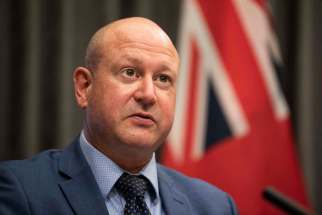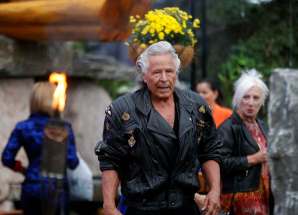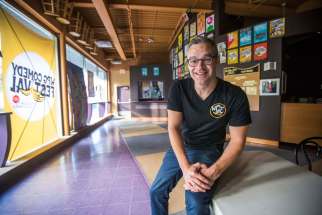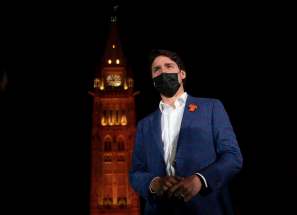Listening after decades of hearing An unexpected number of Canadians have been swept up by the emotion of a powerful orange wave that has the potential to ease pain, improve lives of Indigenous people
Read this article for free:
or
Already have an account? Log in here »
To continue reading, please subscribe:
Monthly Digital Subscription
$0 for the first 4 weeks*
- Enjoy unlimited reading on winnipegfreepress.com
- Read the E-Edition, our digital replica newspaper
- Access News Break, our award-winning app
- Play interactive puzzles
*No charge for 4 weeks then price increases to the regular rate of $19.00 plus GST every four weeks. Offer available to new and qualified returning subscribers only. Cancel any time.
Monthly Digital Subscription
$4.75/week*
- Enjoy unlimited reading on winnipegfreepress.com
- Read the E-Edition, our digital replica newspaper
- Access News Break, our award-winning app
- Play interactive puzzles
*Billed as $19 plus GST every four weeks. Cancel any time.
To continue reading, please subscribe:
Add Free Press access to your Brandon Sun subscription for only an additional
$1 for the first 4 weeks*
*Your next subscription payment will increase by $1.00 and you will be charged $16.99 plus GST for four weeks. After four weeks, your payment will increase to $23.99 plus GST every four weeks.
Read unlimited articles for free today:
or
Already have an account? Log in here »
Hey there, time traveller!
This article was published 01/10/2021 (1530 days ago), so information in it may no longer be current.
It seemed that all of Canada glowed orange, in act or in mind. On the streets of Winnipeg, a sea of people marched in orange shirts, carrying orange signs. On social media, people shared text posts on orange backgrounds, urging more attention to the Truth and Reconciliation Commission’s 94 calls to action.
Even city buses — though not orange — marked the day on their digital signs.
If you’d come to me 10 years ago and told me this week would happen, I wouldn’t have believed you. If you’d told me that on the last day of September 2021, everything from a cocktail bar to a Botox clinic would close to remember the children and survivors of residential schools, I would have said you were telling me about a dream.
Not the kind we seek to create, but the kind that disintegrates upon waking.
Maybe that was just my lack of faith, to think that Canada could not change. Maybe it was just the brevity of my own historical view, locked in the narrow window of my time. Maybe the cynicism was an inevitable result of years spent hearing Indigenous people tell us about the harm colonization has done and is still doing to their lives.
For so long, we heard those truths but it rarely translated into action.
Canada knew, you see. It knew about the residential schools, almost from the beginning. In 1907, Peter Bryce, a government physician, blew the whistle on the atrocious conditions and high mortality rates in the schools; at the time, media coverage of the report was damning.
This week, University of Manitoba Indigenous studies professor Sean Carleton and student Kathleen McKenzie reflected on that reporting in an article on ActiveHistory.ca, touching on some of the most clear-eyed responses.For so long, we heard those truths but it rarely translated into action.
“Indian Schools Deal Out Death,” blared a headline in Victoria’s Daily Colonist newspaper. A Toronto paper urged public pressure to ensure the crisis wasn’t buried by the government, so that “the scandalous procession of Indian children to school and on to the cemetery may possibly be stopped.”
Well, we know how that turned out. The schools persisted for nearly 90 years after the report. Children kept dying. Families kept being broken. Language and culture kept being stolen, and while the public knew, for a time at least, how dire the conditions were, it clearly did not muster enough concern to bring that damage to a halt.
So how much trauma could have been prevented had there been action? If we ask ourselves that question, then we must also recognize that the same could be said today; after all, as Carleton and McKenzie write: “the cycle of Canadian indifference and inaction in the face of ongoing injustice for Indigenous peoples continues today.”
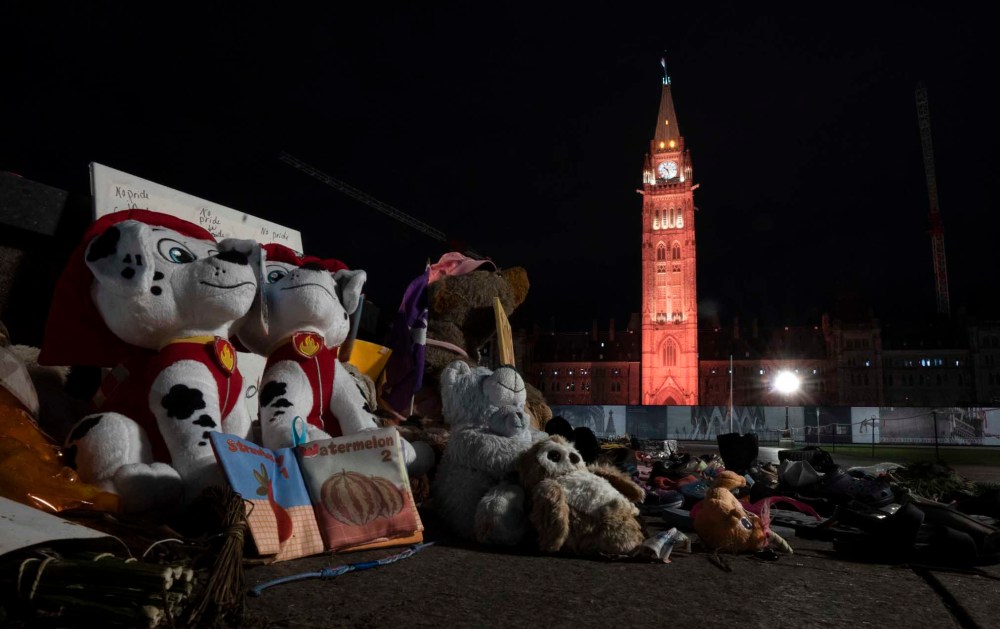
Yet the widespread observance of the National Day for Truth and Reconciliation shows there’s hope for that cycle to be broken. There was the march down Winnipeg’s Main Street to the powwow in St. John’s Park, where the number swelled into the thousands; across Canada there were ceremonies, gatherings, acts of solidarity and education.
To me, it has always seemed as if Canada’s capacity to listen to Indigenous people always moves in fits and starts. It is as if each topic begins as too hot for white Canadians to touch; but slowly, we are able to collectively get closer, led there by the patient and persistent efforts of those Indigenous voices calling for justice.
How damning, still, that it usually takes a tragedy to push that rising consciousness into action.
Consider how long advocates fought to bring attention to missing and murdered Indigenous women and girls; in Winnipeg, it took the 2015 death of Tina Fontaine to shock the broader community into awareness and spur new efforts to understand and better address the factors that put her and others at disproportionate risk.
This year, it was the discovery of 215 unmarked graves in Tk’emlúps te Secwe̓pemc First Nation that released the surge of attention on the horrific legacy of the residential schools, even though the fact of such widespread deaths had been known and documented for generations.
It’s too soon to say whether that surge will translate into meaningful action. Yet the surge itself is change, and it is potential. If the country can paint itself orange and tune, for one solid day, into Indigenous voices, then we can also commit to harnessing that energy to shine a brighter light on the path forward.If the country can paint itself orange and tune, for one solid day, into Indigenous voices, then we can also commit to harnessing that energy to shine a brighter light on the path forward.
It’s only a beginning, though. The path may be lit more brightly, but it’s still up to us to walk it.
The fate of reconciliation in Canada rests not on one day of remembrance and reflection, but on what comes after. For Indigenous people, it was a day of mourning, community and healing. For the rest of us, the day will only be as meaningful as it serves to steel our resolve that the harms of colonization must be confronted.
They are not in the past. They are not over. It’s been said many times, but as we go forward from Sept. 30, we must remember that colonization in Canada has never ended. We mourned the children stolen by residential schools, but what matters now is what transformation we will support in their memory.
What slows the progress to reconciliation isn’t just labyrinthian political and bureaucratic hurdles, but also a lack of imagination. We are forging ahead to a place that doesn’t yet exist: there’s no living example of what a decolonized Canada could look like.
The good news is we do not go there in the dark. Indigenous writers and visionaries have showed us the map. The Truth and Reconciliation Commission’s 94 calls to action have shown us the map. And the connections of solidarity forged around this week’s events also gives a sense of how to navigate the road ahead.
And yes, reconciliation can be difficult and dizzyingly complex, if you wish to pick apart all of its infinite tangles. But the starting point for the discussion can be very simple. Things were taken from Indigenous people: land, language, culture, economic opportunity, self-determination. They need to be given back.
So let’s talk safe housing. Let’s talk clean water. Let’s talk about a child-welfare system that devastates Indigenous families at massively disproportionate rates. Let’s talk about economic justice, in a nation where billions of dollars in wealth has been extracted from Indigenous territories.For Indigenous people, it was a day of mourning, community and healing. For the rest of us, the day will only be as meaningful as it serves to steel our resolve that the harms of colonization must be confronted.
And let’s talk about land. Australia is not exactly a model for decolonization, but this week it returned nearly 400,000 acres of land to the Eastern Kuku Yalanji people, who have called the area home for tens of thousands of years, and will now once again be the lone stewards of their precious forests. Canada could do the same.
Is it possible? If you’d told me 10 years ago that much of the country would pause Thursday to listen and reflect and remember, I wouldn’t have believed you. A decade from now, we may look at news of hope and say the same. Thursday showed that Canada is listening, perhaps more than ever.
Now it’s time to put that into action.
melissa.martin@freepress.mb.ca
Our newsroom depends on a growing audience of readers to power our journalism. If you are not a paid reader, please consider becoming a subscriber.
Our newsroom depends on its audience of readers to power our journalism. Thank you for your support.


